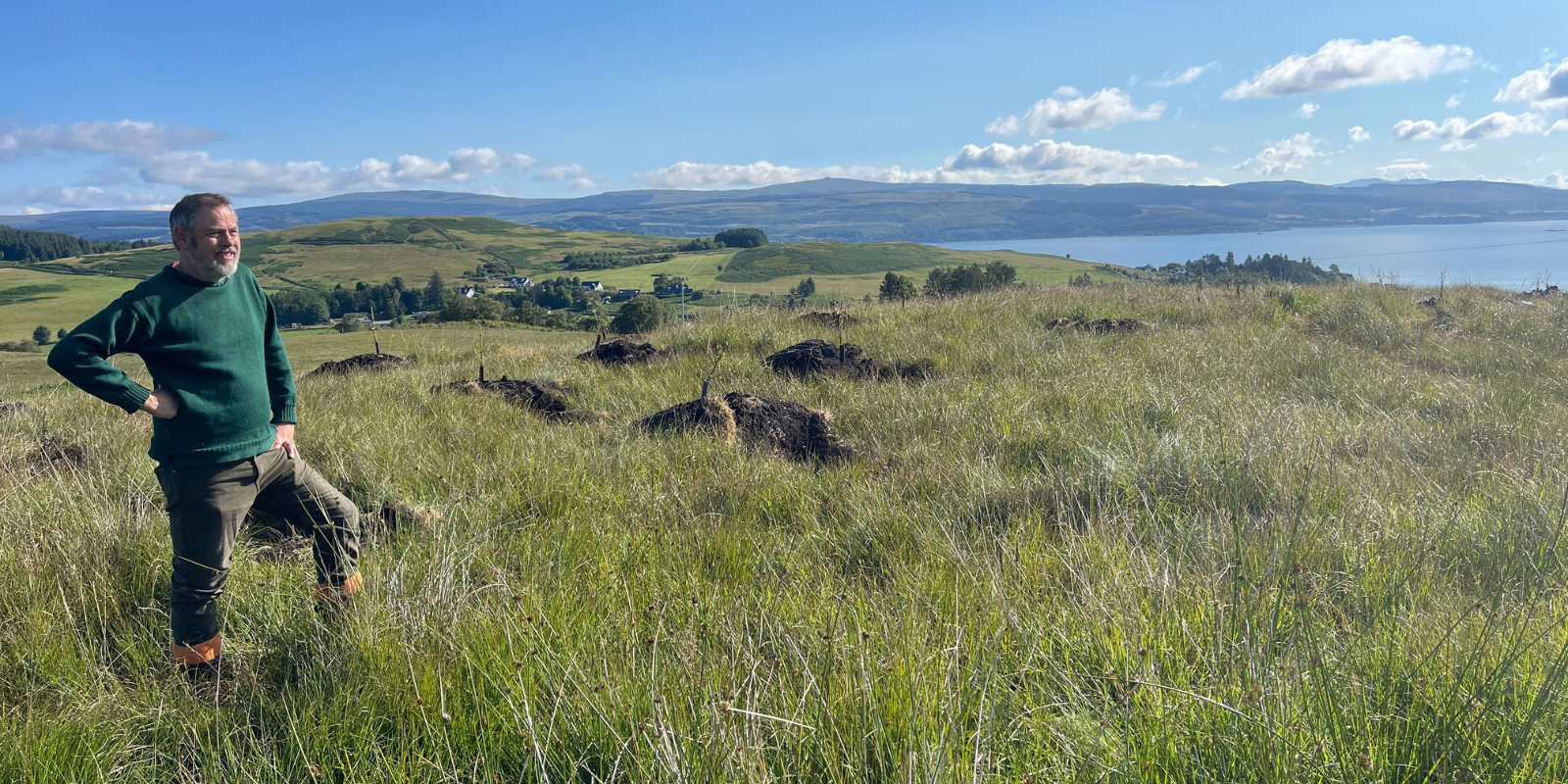Peatlands are unique, vital ecosystems. They are vast terrestrial carbon stores, and they also provide natural flood and wildfire mitigation. They are home to specialised plant and animal life, making a positive contribution to native biodiversity.
But when they are damaged – and sadly over 80% of the UK’s peatlands are damaged – they release CO2 into the atmosphere and actually contribute to climate change. They can also have a negative effect on water quality, and can increase the risk of flooding and wildfires.
If you are a landowner with damaged peatland on your land, you have an amazing opportunity to repair your local ecosystems and help fight back against climate change by starting on your peatland restoration journey today!
Restoring your peatland
We can facilitate peatland restoration on your property, using our experience and expertise in surveying, planning, funding applications, contract management and the Peatland Code to maximise carbon emission reduction and income whilst increasing biodiversity.
We can help you with all aspects of the peatland restoration process from design to completion and can even help you to sell the carbon credits you make on the international voluntary carbon market. Let’s take a closer look at why you should consider restoring your peatland.
Wildfire risk
Historical peatland drainage purposely lowers the water table, leaving exposed dry peatland which then becomes home to highly combustible vegetation such as heather. When combined with the layers of dried peat beneath, the perfect conditions are created for wildfires to start easily and spread quickly.
Wildfires lead to the carbon which is stored in the peatland being burnt and released into the atmosphere, creating high levels of atmospheric pollution which can be detected up to fifty miles away. Add to this the huge biodiversity losses resulting from all the specialised invertebrates, small mammals and ground nesting birds losing their peatland homes, and it is an ecological disaster.
Flood risk and water quality
Natural peatlands have an amazing ability to retain water and a large capacity to act as a natural filter, helping remove pollutants from water. However, drained peatland loses these abilities, as it loses its capacity to absorb water. Eroded channels within peatland also result in increased water runoff, which carries peat sediment into watercourses. This means that at times of heavy rainfall, there is increased flood risk and a reduction in water quality.
How do we restore peatland?
What we need to do in the peatland restoration process is to re-wet the peatland by raising the water table again. This is done through hydrological intervention such as blocking drainage channels, and also through revegetating the peatland with water-holding sphagnum mosses. This restores to the peatland its ability to hold back water, helping to reduce flood risks downstream at times of high flow, as well as minimising the wildfire risk.
It is up to us to restore these precious ecosystems and the biodiversity that depends upon them. Make a difference by starting on your peatland restoration journey today!
